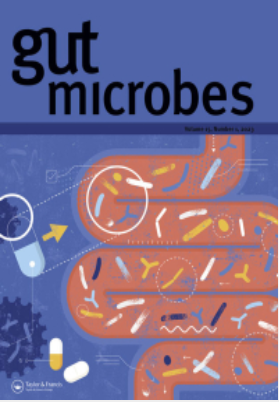Muropeptides and muropeptide transporters impact on host immune response.
IF 12.2
1区 医学
Q1 GASTROENTEROLOGY & HEPATOLOGY
引用次数: 0
Abstract
In bacteria, the cell envelope is the key element surrounding and protecting the bacterial content from mechanical or osmotic damages. It allows the selective interchanges of solutes, ions, cellular debris, and drugs between the cellular compartments and the external environment, thanks to the presence of transmembrane proteins called transporters. The major component of the cell envelope is the peptidoglycan, consisting of long linear glycan strands cross-linked by short peptide stems. During cell growth or under stress conditions, peptidoglycan fragments, the muropeptides, are released by bacteria and recognized by the host Pattern Recognition Receptor, promoting the activation of their innate defense mechanisms. The review sums up the salient aspects of microbiota-host interaction with a focus on the NOD-dependent immune response to bacterial peptidoglycan and on the accountability of muropeptide transporters in the crosstalk with the host and in antibiotic resistance. Furthermore, it retraces the discoveries and applications of microorganisms-derived components such as vaccines or vaccine adjuvants.肽和肽转运体对宿主免疫反应的影响
在细菌中,细胞包膜是围绕和保护细菌内容物免受机械或渗透破坏的关键要素。由于存在称为转运体的跨膜蛋白,细胞包膜允许溶质、离子、细胞碎片和药物在细胞区与外部环境之间进行选择性交换。细胞包膜的主要成分是肽聚糖,由短肽链交联的长线性糖链组成。在细胞生长过程中或在应激条件下,细菌会释放肽聚糖片段,即 "微肽",并被宿主的模式识别受体识别,从而促进先天防御机制的激活。这篇综述总结了微生物与宿主相互作用的主要方面,重点是对细菌肽聚糖的 NOD 依赖性免疫反应,以及肽转运体在与宿主的相互作用和抗生素耐药性中的责任。此外,该书还追溯了疫苗或疫苗佐剂等微生物衍生成分的发现和应用。
本文章由计算机程序翻译,如有差异,请以英文原文为准。
求助全文
约1分钟内获得全文
求助全文
来源期刊

Gut Microbes
Medicine-Microbiology (medical)
CiteScore
18.20
自引率
3.30%
发文量
196
审稿时长
10 weeks
期刊介绍:
The intestinal microbiota plays a crucial role in human physiology, influencing various aspects of health and disease such as nutrition, obesity, brain function, allergic responses, immunity, inflammatory bowel disease, irritable bowel syndrome, cancer development, cardiac disease, liver disease, and more.
Gut Microbes serves as a platform for showcasing and discussing state-of-the-art research related to the microorganisms present in the intestine. The journal emphasizes mechanistic and cause-and-effect studies. Additionally, it has a counterpart, Gut Microbes Reports, which places a greater focus on emerging topics and comparative and incremental studies.
 求助内容:
求助内容: 应助结果提醒方式:
应助结果提醒方式:


